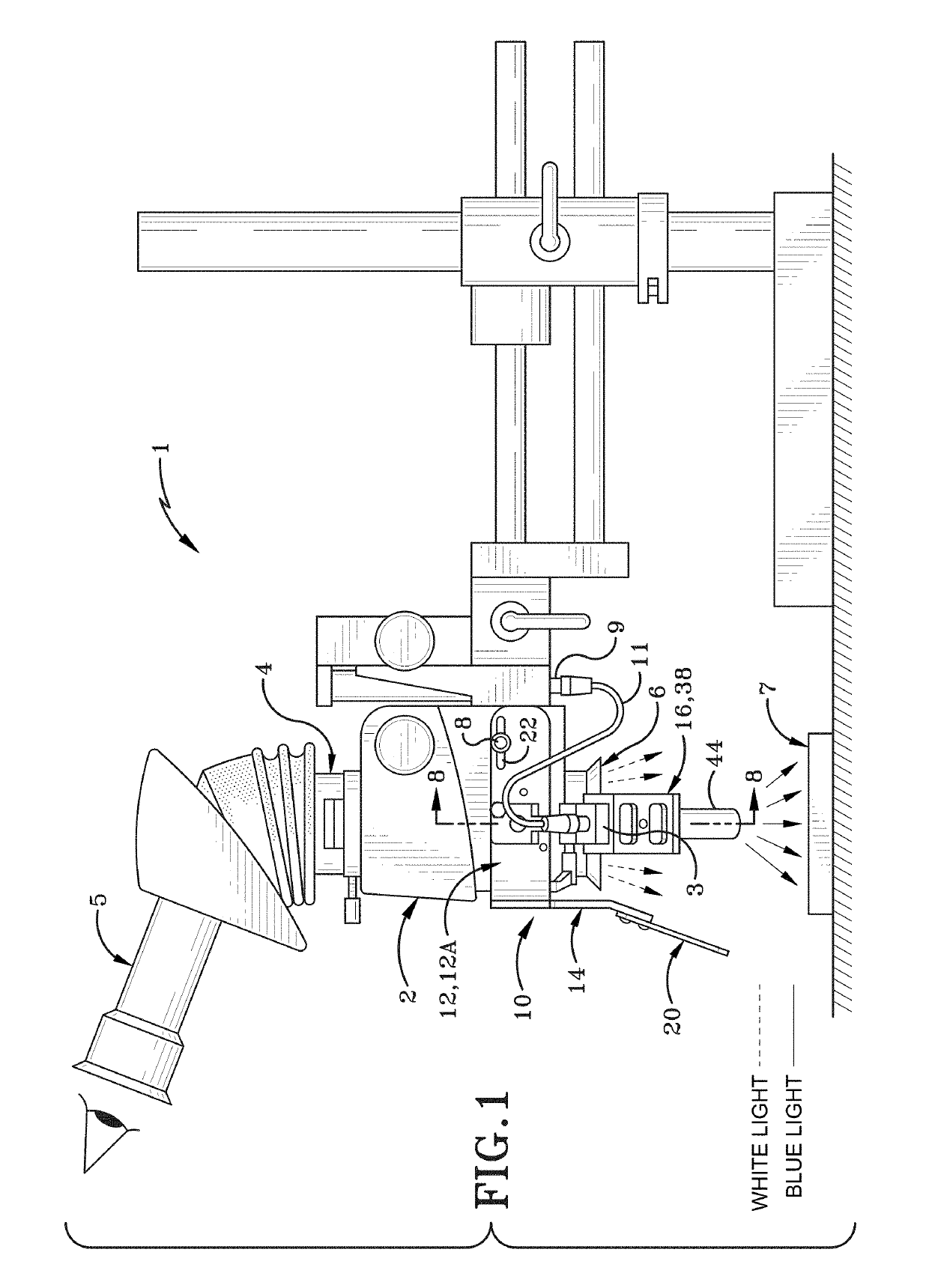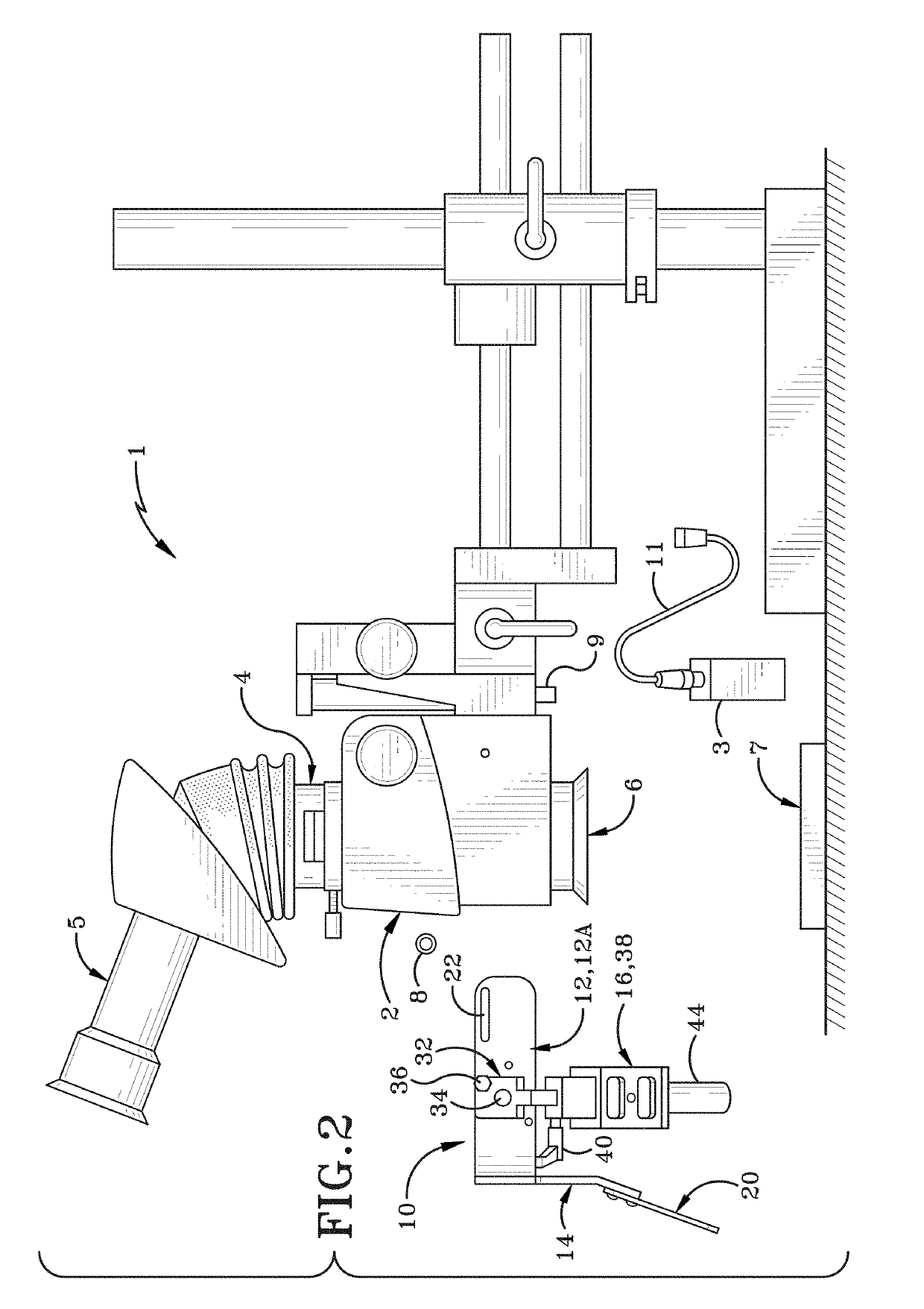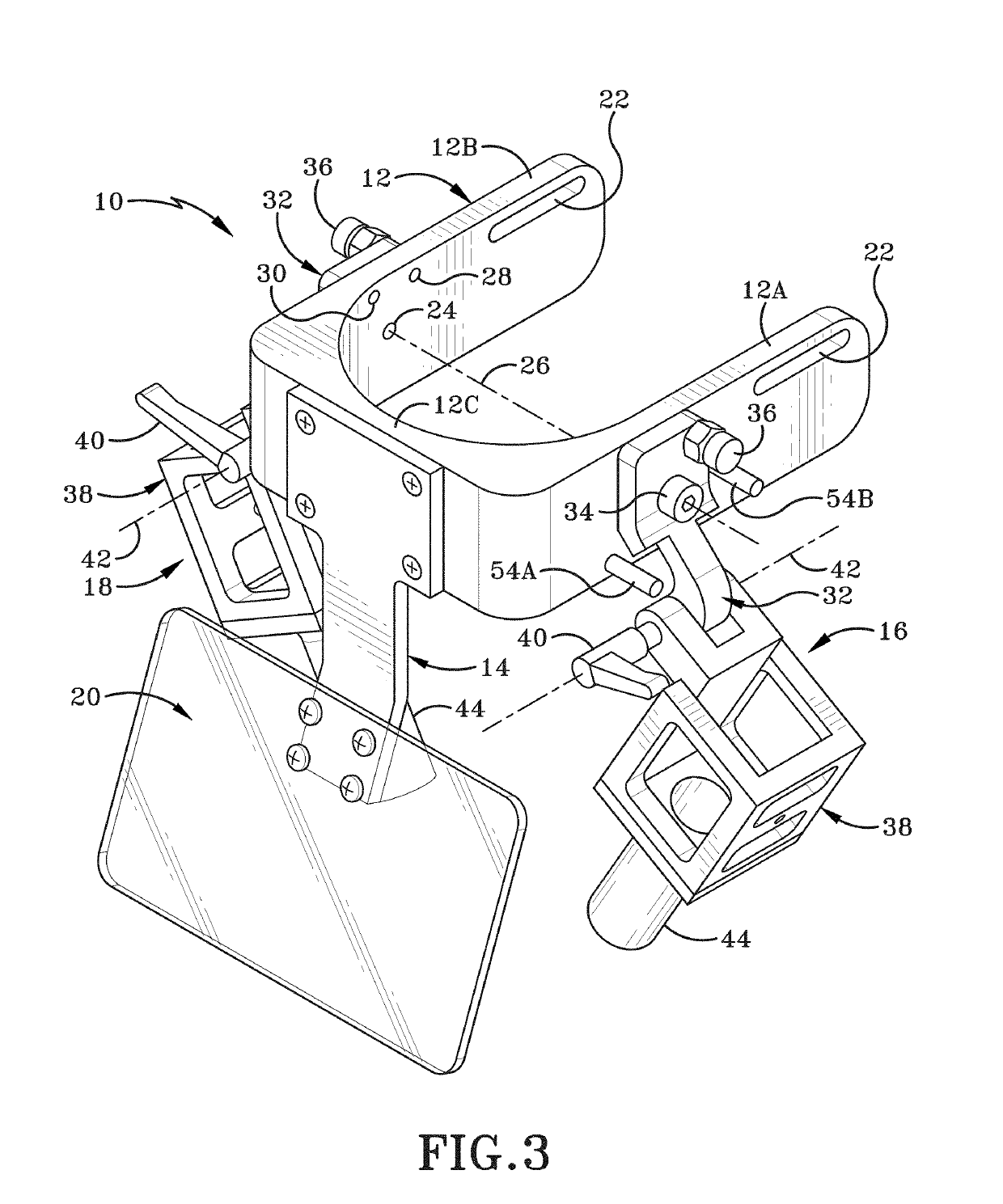System and method for detecting contaminants on a circuit
a microelectronic circuit and microelectronic technology, applied in the direction of fluorescence/phosphorescence, semiconductor/solid-state device testing/measurement, instruments, etc., can solve the problems of inability to detect organic epoxy residues on gold wires or gold ribbons bonded to the surface of microelectronic circuit boards using a white light microscopic device, and the detection of organic epoxy residues on gold wires or gold ribbons is difficult, and achieves low cos
- Summary
- Abstract
- Description
- Claims
- Application Information
AI Technical Summary
Benefits of technology
Problems solved by technology
Method used
Image
Examples
Embodiment Construction
[0029]The present disclosure relates to an apparatus for holding a light source coupled with a viewing device to detect a contaminant on a microelectronic circuit board.
[0030]FIG. 1 and FIG. 2 depict a contaminant detection system 1 comprising a stereo microscope or other viewing device 2 equipped with a light source holding apparatus 10 and at least one blue light source 3 which has a wavelength in a range from about 400 nanometers (nm) to about 500 nm. The system 1 includes a filter 4 which is installed in a removably connected manner with the viewing device 2 between an eyepiece 5 and a white light source 6. The filter 4 is used to filter out any light which has a wavelength beyond a selected wavelength. In one example, the term “beyond” refers to filtering wavelengths shorter than the selected wavelength. A sample microelectronic circuit board 7 is placed under the blue light source 3 and white light source 6 of the microscope 2. As depicted in FIG. 2, the light source holding a...
PUM
| Property | Measurement | Unit |
|---|---|---|
| first wavelength | aaaaa | aaaaa |
| first wavelength | aaaaa | aaaaa |
| fluorescent feedback second wavelength | aaaaa | aaaaa |
Abstract
Description
Claims
Application Information
 Login to view more
Login to view more - R&D Engineer
- R&D Manager
- IP Professional
- Industry Leading Data Capabilities
- Powerful AI technology
- Patent DNA Extraction
Browse by: Latest US Patents, China's latest patents, Technical Efficacy Thesaurus, Application Domain, Technology Topic.
© 2024 PatSnap. All rights reserved.Legal|Privacy policy|Modern Slavery Act Transparency Statement|Sitemap



